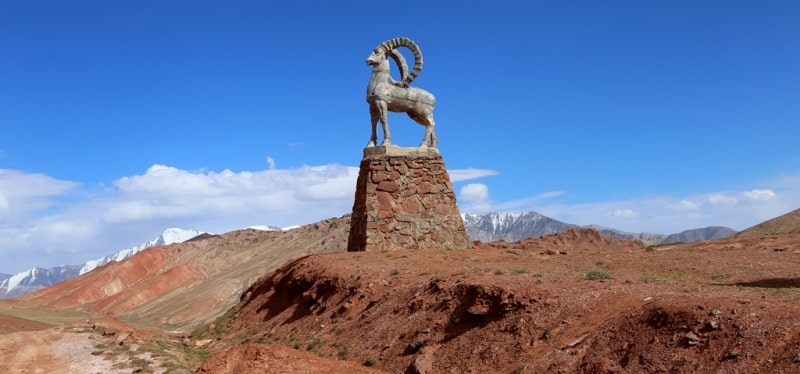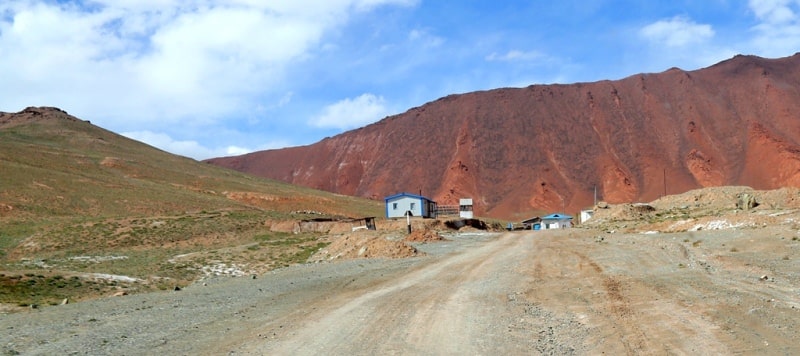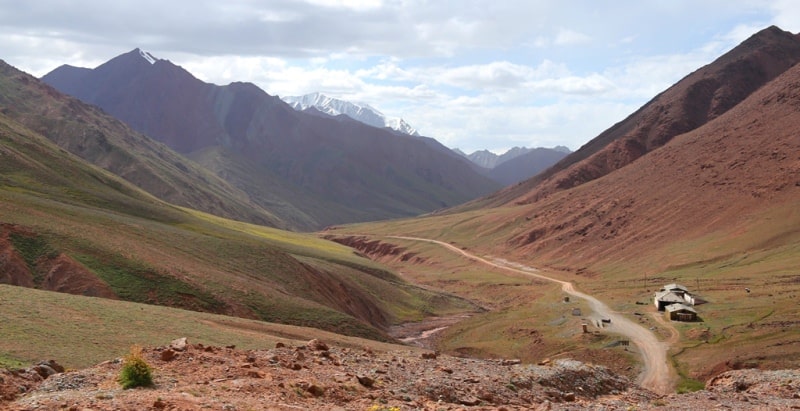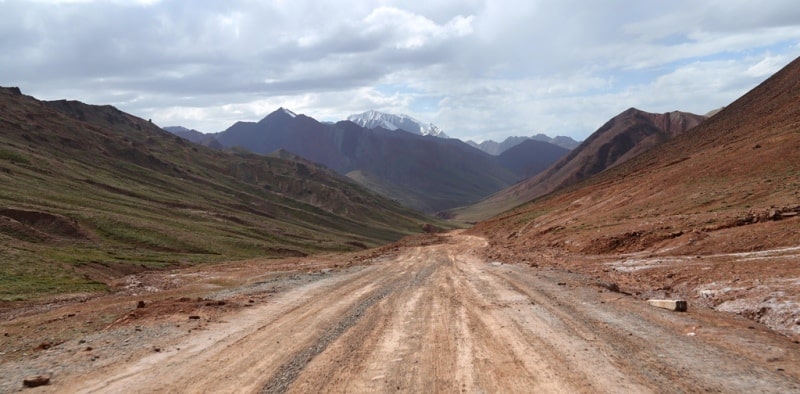You are here
History of Kyzyl-Art pass.

Pamir passes.
“Fell on their knees in the snow, offering Allah a prayer for a happy pass through the dangerous Kyzyl-Art, where sudden disastrous storms often occur”.
Swedish traveler Sven Gedin. March 1894.
Trip from Sary-Tash to Tajikistan.
More recently, the Pamir remained mysterious and inaccessible. Only in the last quarter of the 19th century it began to be visited by Russian researchers. They usually walked through its northern gates - the Kyzyl-Art pass in the Zaalayskiy ridge.
Now the path to them leads from the Alai valley along an asphalt highway, gradually entering the mountain gorge and coming close to the Kyzyl-Art river with reddish water running towards them. So they drag on in pairs, crossing only once, almost to the very pass, in front of which the drivers of the cars usually let the engines cool down.
Then the cars overcome the last rise in half an hour and go to the crest of the ridge. In just a couple of hours from the flat Alai valley, an ascent of more than a kilometer is made. Now, after the highway was laid across the pass in 1932, everything looks simple. And before?
An ancient path, which was famous for a difficult and dangerous path, ran through the Kyzyl-Art pass. It was along it in 1891 that a detachment of Russian military Cossacks of a thousand people with caravans and artillery under the command of Colonel M.E.Ionov climbed the pass and set foot on the Pamir.
The detachment hurried south to the Pyanj River, to meet the British penetration through Afghanistan. After that, to ensure their rear, the soldiers built a wheeled road here, which was replaced by an automobile road.
One can only guess how the detachment got to take the pass, all approaches to which (this was later noted by the builders of the highway) were covered with skeletons and dried corpses of fallen camels, horses, donkeys.
The Swedish traveler S. Gedin, who passed here in March 1894, wrote that his caravans before the ascent "fell on their knees in the snow, offering Allah a prayer for a happy pass through the dangerous Kyzyl-Art, where sudden disastrous storms often occur."
At the pass, he saw a pile of stones piled in a heap, decorated with "tutami" (poles). They were hung with fur pendants. colorful rags of fabric, horns of mountain goats and rams. The caravans told S. Redina about Saint Kyzyl-Art, who at the time of the prophet went from Alai to the south to spread the true faith and during his wandering opened the pass.
Needless to say, the history of the discovery of the pass and the emergence of its name turned out to be densely mixed with religious legends. And the truth is that the pass was known to people even before our era - at the time of the Scythians and the "Great Silk Road".
It is noteworthy in this regard that the name of the saint, repeating the name of the pass, is formed by the widespread ancient Turkic words "kyzyl" ("red") and "art" ("pass"), which in itself makes one think that the saint was not involved in the discovery and the name of the pass.
But if the second part of the name - "pass" does not cause any doubts, then sometimes they argue about the meaning of the word "red". For example, it is believed that it emphasizes the importance of an object, its "primacy", which happens in toponymy.
However, guided by such a motive, it is difficult to find the pass itself in the cunning interweaving of mountain gorges. It is more expedient to proceed from the rule widespread in mountain toponymy - the name, reflecting the natural features of the object, should help to find it on the ground.
In our example, the name of the Kyzyl-Art River (“Red Pass”), which flows from it to the north, helps the search for the pass. And the fact that she took the name of the pass emphasizes that he is the main element here.
Linking the name of the river to the main object indicates that the road to it leads along this river. And the word "red", indicating the dominant brick-brown color of the rocks in the gorge and the color of the water in the river, convinces the traveler of the correctness of the chosen path even on the approaches.
S. Gedin's caravans were not newcomers to the mountains, they knew that the names show the way. But the helplessness and superstitious fear of the cruel temper of the overwhelm, complicated by a great height, prompted them to pray - maybe it will help.
In the same way, the caravans of the writer P. Luknitskiy in 1930 prayed at the Kyzyl-Art pass. True, they did not tell the legend about the missionary from Islam - perhaps they did not already know. In our No one remembers the days of the prayer ritual: the road has erased it from life.
However, they try not to forget about the harsh nature of the pass.




Authority:
S. Alimov. "Pamir Highway: A Journey into the World of Names." Almanac "Wind of wanderings", №23
Photos by
Alexander Petrov.







